SPANX Control of Lamin A/C Modulates Nuclear Architecture and Promotes Melanoma Growth
- PMID: 32571981
- PMCID: PMC7541784
- DOI: 10.1158/1541-7786.MCR-20-0291
SPANX Control of Lamin A/C Modulates Nuclear Architecture and Promotes Melanoma Growth
Abstract
Mechanisms regulating nuclear organization control fundamental cellular processes, including the cell and chromatin organization. Their disorganization, including aberrant nuclear architecture, has been often implicated in cellular transformation. Here, we identify Lamin A, among proteins essential for nuclear architecture, as SPANX (sperm protein associated with the nucleus on the X chromosome), a cancer testis antigen previously linked to invasive tumor phenotypes, interacting protein in melanoma. SPANX interaction with Lamin A was mapped to the immunoglobulin fold-like domain, a region critical for Lamin A function, which is often mutated in laminopathies. SPANX downregulation in melanoma cell lines perturbed nuclear organization, decreased cell viability, and promoted senescence-associated phenotypes. Moreover, SPANX knockdown (KD) in melanoma cells promoted proliferation arrest, a phenotype mediated in part by IRF3/IL1A signaling. SPANX KD in melanoma cells also prompted the secretion of IL1A, which attenuated the proliferation of naïve melanoma cells. Identification of SPANX as a nuclear architecture complex component provides an unexpected insight into the regulation of Lamin A and its importance in melanoma. IMPLICATIONS: SPANX, a testis protein, interacts with LMNA and controls nuclear architecture and melanoma growth.
©2020 American Association for Cancer Research.
Conflict of interest statement
Figures
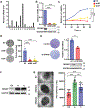
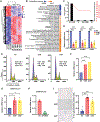


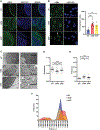
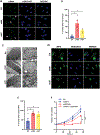
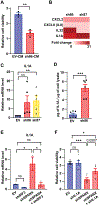
Similar articles
-
The multifunctional role of SPANX-A/D protein subfamily in the promotion of pro-tumoural processes in human melanoma.Sci Rep. 2021 Feb 11;11(1):3583. doi: 10.1038/s41598-021-83169-1. Sci Rep. 2021. PMID: 33574425 Free PMC article.
-
SPANX-B and SPANX-C (Xq27 region) gene dosage analysis in Sicilian patients with melanoma.Melanoma Res. 2008 Aug;18(4):295-9. doi: 10.1097/CMR.0b013e32830aaa90. Melanoma Res. 2008. PMID: 18626316
-
Decreased mechanical stiffness in LMNA-/- cells is caused by defective nucleo-cytoskeletal integrity: implications for the development of laminopathies.Hum Mol Genet. 2004 Nov 1;13(21):2567-80. doi: 10.1093/hmg/ddh295. Epub 2004 Sep 14. Hum Mol Genet. 2004. PMID: 15367494
-
Laminopathies: what can humans learn from fruit flies.Cell Mol Biol Lett. 2018 Jul 6;23:32. doi: 10.1186/s11658-018-0093-1. eCollection 2018. Cell Mol Biol Lett. 2018. PMID: 30002683 Free PMC article. Review.
-
Protein structural and mechanistic basis of progeroid laminopathies.FEBS J. 2021 May;288(9):2757-2772. doi: 10.1111/febs.15526. Epub 2020 Sep 3. FEBS J. 2021. PMID: 32799420 Review.
Cited by
-
Role and Clinical Utility of Cancer/Testis Antigens in Head and Neck Squamous Cell Carcinoma.Cancers (Basel). 2021 Nov 14;13(22):5690. doi: 10.3390/cancers13225690. Cancers (Basel). 2021. PMID: 34830845 Free PMC article. Review.
-
Arginyl-tRNA-protein transferase 1 (ATE1) promotes melanoma cell growth and migration.FEBS Lett. 2022 Jun;596(11):1468-1480. doi: 10.1002/1873-3468.14376. Epub 2022 May 20. FEBS Lett. 2022. PMID: 35561126 Free PMC article.
-
The Price of Human Evolution: Cancer-Testis Antigens, the Decline in Male Fertility and the Increase in Cancer.Int J Mol Sci. 2023 Jul 19;24(14):11660. doi: 10.3390/ijms241411660. Int J Mol Sci. 2023. PMID: 37511419 Free PMC article. Review.
-
Transcriptome-Wide Association Study Reveals New Molecular Interactions Associated with Melanoma Pathogenesis.Cancers (Basel). 2024 Jul 11;16(14):2517. doi: 10.3390/cancers16142517. Cancers (Basel). 2024. PMID: 39061157 Free PMC article.
-
Prognostic Biomarkers in Uveal Melanoma: The Status Quo, Recent Advances and Future Directions.Cancers (Basel). 2021 Dec 25;14(1):96. doi: 10.3390/cancers14010096. Cancers (Basel). 2021. PMID: 35008260 Free PMC article. Review.
References
Publication types
MeSH terms
Substances
Grants and funding
LinkOut - more resources
Full Text Sources
Medical
Miscellaneous

